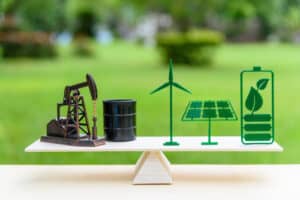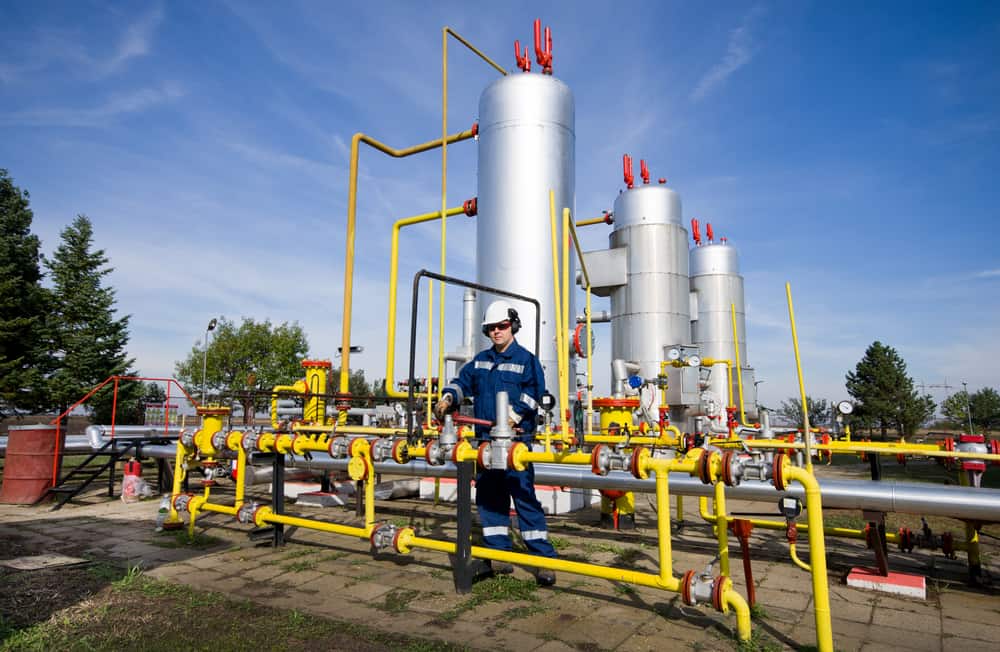Natural Gas and Electricity Providers
When it comes to finding the best natural gas and electricity provider, comparing different options can be a game-changer, potentially saving you a substantial amount of money on your energy bills. Imagine having the power to select the most suitable plans and rates that align perfectly with your needs and budget.
One of the key factors to consider is the range of rewards and benefits offered by these providers. Take, for instance, a licensed company that serves both residential and business customers across multiple states and districts. Not only do they offer electricity and natural gas services, but they also boast an enticing rewards program.
What are Natural Gas and Electricity Providers?
Natural gas and electricity providers are essential entities that play a vital role in the energy sector by offering a reliable and uninterrupted supply of natural gas and electricity to a wide range of customers, including households, commercial establishments, and industrial facilities. These companies form a critical link in the energy supply chain, bridging the gap between energy producers and end-users.
In the case of natural gas, these providers source the gas from various producers, including natural gas wells and processing plants. They then engage in the intricate process of transporting the gas through an extensive network of pipelines to distribution centers strategically located across regions. From there, the gas is further delivered to individual consumers through a vast network of underground pipelines, ensuring that homes, businesses, and industries can access this efficient and cleaner-burning energy source.

How do Natural Gas and Electricity Providers Work?
Natural gas and electricity providers operate as intricate and dynamic components of the energy supply chain, enabling the reliable distribution of two essential energy sources: natural gas and electricity.
Natural Gas Providers:
- Sourcing and Procurement: Natural gas providers secure their supply from various sources, including domestic and international gas wells, shale gas reserves, and liquefied natural gas (LNG) terminals. They engage in long-term contracts with gas producers to ensure a stable and consistent supply.
- Transmission and Distribution: Once procured, natural gas is transported over vast distances through an extensive network of pipelines. High-pressure pipelines move the gas from production facilities to regional distribution centers. At these centers, gas pressure is reduced and regulated before it is further distributed through a network of smaller pipelines that crisscross urban and rural areas.
- Metering and Billing: Gas providers install meters at individual consumer locations to measure the amount of gas used. Billing is based on actual consumption, and customers are typically charged per unit of gas used.
- Safety and Maintenance: Natural gas providers prioritize safety measures to prevent leaks and ensure the integrity of their pipelines. Regular maintenance and inspections are conducted to identify and address potential issues promptly.
Electricity Providers:
- Power Generation: Electricity providers generate power through various means, depending on the available resources. This can include fossil fuel-based power plants (coal, natural gas), nuclear power plants, hydroelectric dams, solar farms, and wind turbines. Some companies also invest in renewable energy projects to promote sustainability.
- Transmission: After generation, electricity is transmitted at high voltages through a network of transmission lines. These lines can span long distances and connect multiple power generation facilities to regional substations.
- Substations and Voltage Reduction: At substations, the voltage is reduced to a level suitable for local distribution. This step helps prevent energy loss and ensures that electricity can be efficiently distributed through medium and low-voltage power lines.
- Distribution: Electricity providers distribute the power through an intricate web of distribution lines that carry electricity to homes, businesses, and industries. These distribution lines are often buried underground or installed on utility poles.
- Metering and Billing: Similar to natural gas providers, electricity providers employ meters to measure the electricity consumption of individual consumers. Billing is based on actual usage, with customers charged according to the amount of electricity they consume.
- Demand Management: Electricity providers also engage in demand management strategies to balance electricity supply and demand. This involves encouraging energy conservation during peak periods or incentivizing consumers to use electricity during off-peak hours.
- Renewable Energy Integration: Many electricity providers are transitioning to renewable energy sources to reduce their environmental impact. They may purchase electricity from renewable energy producers or invest in building their renewable energy infrastructure.
Different Types of Natural Gas and Electricity Plans
When it comes to selecting an energy provider, consumers are presented with a range of plans designed to suit their specific preferences and requirements. By understanding the intricacies of these plans, consumers can make informed decisions about their energy consumption. Below are the key types of plans offered by energy providers:
Fixed-Rate Plans
Fixed-rate plans offer consumers stability and predictability in their energy bills. With this type of plan, the energy rate remains constant throughout the duration of the contract, regardless of fluctuations in the energy market. Whether energy prices rise or fall, the consumer's rate remains locked in, providing financial security and peace of mind. This allows individuals and businesses to budget more effectively, as their energy costs remain consistent and unaffected by external market influences.
Variable-Rate Plans
In contrast to fixed-rate plans, variable-rate plans have energy rates that fluctuate based on market conditions. The energy price is tied to the current market rates, meaning consumers may experience fluctuations in their bills from month to month. While variable-rate plans may offer lower rates during certain periods, they can also result in higher bills if energy prices rise. These plans are well-suited for consumers who are comfortable with market fluctuations and seek flexibility in their energy pricing.
Green Energy Plans
Green energy plans cater to environmentally-conscious consumers who wish to support renewable energy sources. These plans ensure that a portion of the energy supplied to the consumer comes from renewable sources like wind, solar, hydro, or biomass. By opting for green energy, consumers contribute to a cleaner and more sustainable future, promoting the growth of renewable energy infrastructure and reducing their carbon footprint.
Time-of-Use Plans
Time-of-use plans offer varying energy rates based on the time of day. Electricity consumption during peak hours is charged at a higher rate, while off-peak hours attract lower rates. This type of plan encourages consumers to shift their energy usage to off-peak periods, which helps in reducing strain on the energy grid during peak demand times. By adjusting their energy consumption habits, consumers can potentially save on their electricity bills and support the overall stability of the electricity grid.
Bundled Plans
Bundled plans combine both natural gas and electricity services, offering consumers the convenience of a single provider for both energy sources. These plans often come with additional benefits, such as discounts, rewards, or special offers for combining services. Bundled plans streamline billing and customer service, making it easier for consumers to manage their energy usage and payments.
Renewable Energy Certificates (RECs) and Green Energy
CleanChoice Energy
David Berends signed up for CleanChoice Energy 2020, hoping to save the environment while also paying a slightly higher price for renewable electricity. But as the company increased its charges each month, his bill increased by almost 15 cents.
His electric bill was already nearly double what he was paying before he switched. Then came Hurricane Ida, which left him pumping water off his property and his electricity bill stinging.
The good news is that he called the company and canceled his contract shortly after.
While the utility company still maintains the lines and bills, customers can now use 100% renewable energy instead of fossil fuels. CleanChoice Energy has become one of the fastest-growing companies in the country, with staff members in New York, Pennsylvania, Ohio, and New Jersey.
The company has also received a $2.5 million award from the U.S. Department of Energy's SunShot Initiative. CleanChoice Energy is committed to reducing its carbon footprint by sourcing energy from renewable sources. CleanChoice Energy is a leading clean energy provider and is making it easy for customers to switch to cleaner energy.
While CleanChoice Energy is committed to making clean energy accessible to all, it initially struggled to keep up with the demands of consumers online. As a result, it invested in an endless amount of new tools to fill in the gaps.
The problem was, however, that these tools didn't communicate with one another. Eventually, the company discovered that Segment would allow it to make the transition smoothly. CleanChoice decided to go with a platform that would give it the tools it needed to stay competitive.
Another major advantage of using a platform like CleanChoice is that it integrates best-of-breed tools and provides turnkey connectivity. Its catalog of integration partners makes it easy to add more tools for its customers. The company also provides a customer-engagement strategy.
The software helps businesses engage with their customers through a unified platform, allowing them to measure the health of their community. CleanChoice Energy is a leading clean energy company that is committed to improving the health of people in the Boston area.

Agway GreenChoice
If you want to use renewable energy sources and help clean the air, consider signing up for Agway GreenChoice. This energy service provides electricity from renewable resources to your home without knowing which electrons are actually reaching your home. With Agway GreenChoice, you will be helping to displace conventional generators that use oil, coal, or nuclear fuel.
Agway GreenChoice customers can also save money on energy bills by avoiding expensive high-priced electricity and boosting their savings.
The Agway stores are committed to providing excellent customer service. Store employees are knowledgeable about the products and will guide you in choosing the best product. They will also provide tips and tricks for getting the most from the products that you purchase.
This is a valuable extra that sets Agway apart from other retail companies. These are all great features of Agway GreenChoice stores and their products. The customer service is one of their greatest differentiators.
Tips for Energy Efficiency
As conscientious consumers, it is crucial to prioritize not only the selection of the right energy provider but also to actively pursue energy optimization and foster energy efficiency in our daily lives. By implementing energy-saving habits and adopting energy-efficient technologies, we can make a substantial impact on reducing our energy consumption, resulting in lower utility bills and a decreased environmental footprint. Here are some detailed tips to promote energy efficiency:
Upgrade to Energy-Efficient Appliances
Consider replacing old, energy-guzzling appliances with modern, energy-efficient models. Look for appliances with ENERGY STAR® ratings, as they meet strict energy efficiency guidelines set by the U.S. Environmental Protection Agency (EPA) and can significantly reduce energy consumption while delivering optimal performance.
Seal Air Leaks
Check for air leaks around windows, doors, and other openings in your home. Use weatherstripping and caulking to seal any gaps and prevent drafts, ensuring that your home maintains a consistent and comfortable temperature without unnecessary energy loss.
Optimize Thermostat Settings
Adjust your thermostat settings to match your comfort needs and the time of day. Lower the temperature during winter nights and raise it during summer nights to save on heating and cooling costs. Installing a programmable thermostat allows you to automate temperature adjustments, optimizing energy usage even when you're not at home.
Efficient Lighting Choices
Replace traditional incandescent bulbs with energy-efficient LED or CFL bulbs. These bulbs use significantly less energy, last longer, and provide the same level of brightness, leading to substantial energy savings over time.
Unplug Devices and Use Power Strips
Many electronic devices consume energy even when turned off or in standby mode. Unplug chargers, gaming consoles, and other electronics when not in use, or use power strips to turn off multiple devices with a single switch.
Properly Maintain Heating and Cooling Systems
Regularly clean and maintain your heating, ventilation, and air conditioning (HVAC) system to ensure it operates at its peak efficiency. Change air filters regularly to improve air quality and help the system function optimally.
Factors to Consider When Choosing a Provider
Selecting an energy provider is a significant decision that requires careful evaluation of several essential factors to ensure you receive the best service tailored to your specific needs. Here are the key aspects to consider when choosing an energy provider in more detail:
Pricing and Rates
One of the primary considerations is the pricing and rates offered by different energy providers. Compare the costs of various plans to find the most competitive and cost-effective option for your energy consumption. It's essential to look beyond the initial rate and inquire about any additional fees or hidden charges that may impact your monthly bills.
Customer Service and Support
The quality of customer service can significantly influence your overall experience with an energy provider. Look for companies that boast a reliable and responsive customer service team. Read reviews and check ratings from existing customers to gauge the level of customer satisfaction and how effectively the provider handles issues and concerns.
Billing and Payment Options
Find out about the billing and payment options available to you. Many providers offer online billing systems, autopay features, and mobile apps, which can make managing your energy account more convenient and hassle-free. Flexible payment options can enhance your overall experience with the provider.
Contract Terms and Length
Thoroughly review the contract terms before committing to an energy provider. Take note of the contract length and any associated cancellation policies or early termination fees. Understanding these terms ensures that you can make an informed decision and avoid any unforeseen consequences in case you need to switch providers in the future.
Renewable Energy Initiatives
If environmental sustainability is a priority for you, look for energy providers that actively invest in renewable energy initiatives. Many companies offer green energy plans, which ensure a portion of the energy supplied comes from renewable sources such as wind, solar, hydro, or biomass. Supporting providers with renewable energy initiatives contributes to a greener future and reduces your carbon footprint.
Reliability and Reputation
Research the reliability and reputation of potential energy providers in your area. Check for any history of service interruptions or customer complaints to assess the provider's track record in delivering consistent and dependable energy services.
Added Value Services
Some energy providers offer additional value-added services that can enhance your overall experience. These services may include energy efficiency tips, home energy audits, or rewards programs. Consider what additional benefits each provider offers beyond the basic energy supply.
Local Regulations and Incentives
Be aware of any local regulations or incentives that may affect your choice of an energy provider. Some regions may have specific programs or incentives for using renewable energy or supporting certain energy providers.
Conclusion
As a conscious consumer, I have come to understand the significant impact of choosing the right natural gas and electricity provider on both my financial well-being and the environment. The detailed information presented here has empowered me with valuable insights into the factors I should consider when making this important decision.
By carefully evaluating pricing and rates, I can ensure that I am getting the best value for my energy consumption. Understanding the provider's customer service and support levels gives me the confidence that I will receive prompt assistance whenever needed. Moreover, exploring billing and payment options ensures that managing my energy account is hassle-free and convenient.
Natural Gas and Electricity Providers Sources
https://segment.com/blog/cleanchoice-energy-paves-the-way-for-cleaner-energies/

